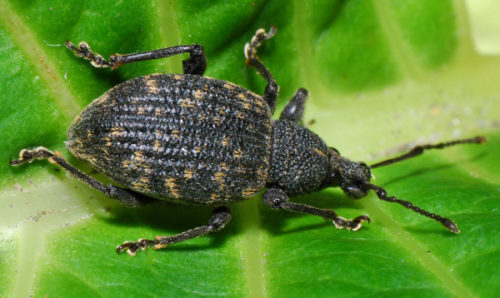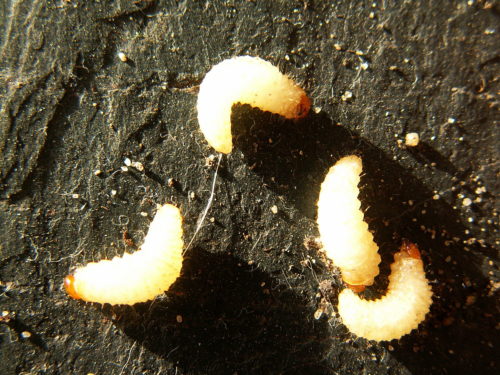Vine weevil, this nearly 1 cm large dark gray weevil can be found on a wide range of ornamental plants.
Vine weevil (Otiorhynchus sulcatus). This nearly 1 cm large dark gray weevil can be found on a wide range of ornamental plants.
The weevil take bites from the leaf edges. However, the greatest damage is caused by the larvae. These live off the buds, young bark and roots. Damage to the bark and roots disrupts the sap flow and causes plants to wither and die.
The larvae hibernate underground. In spring, the larvae pupate into young weevils. In outdoor cultivation, there is one generation per year; in the greenhouse or conservatory, there may be several due to higher temperatures.
The vine weevil prefers the somewhat firmer, tough leaves, such as those of the camellia and rhododendron.
Control
In horticulture, the weevil is controlled with biological agents in the form of nematodes (Steinernema kraussei and Heterorhabditis).
You can easily catch the weevils in the vegetable and ornamental garden: because these weevils are nocturnal, they crawl away during the day. Place a plank or inverted flower pot on the ground and regularly ‘harvest’ the weevils that hide under it.


